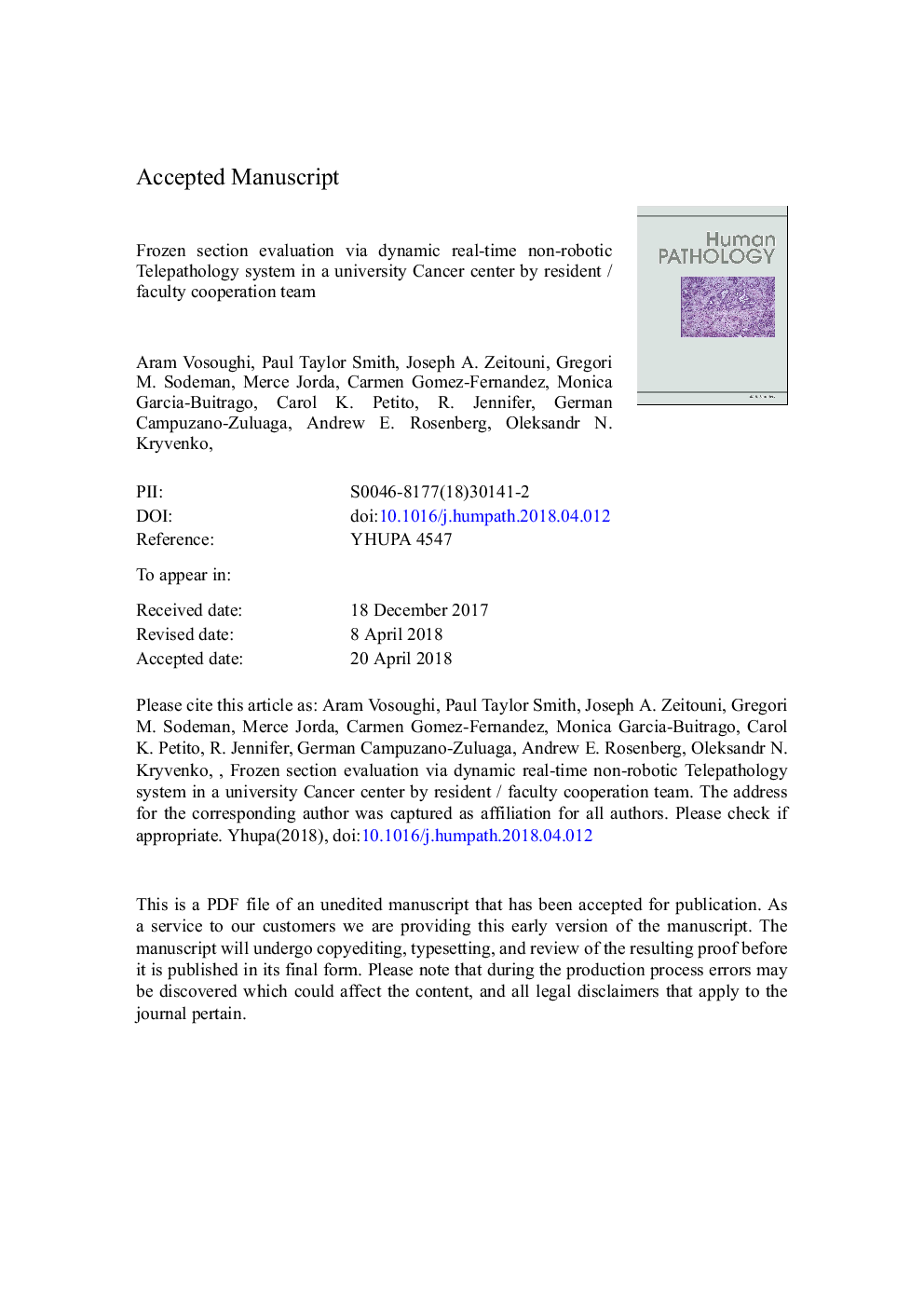| Article ID | Journal | Published Year | Pages | File Type |
|---|---|---|---|---|
| 8807480 | Human Pathology | 2018 | 26 Pages |
Abstract
Frozen section telepathology interpretation experience has been largely limited to practices with locations significantly distant from one another with sporadic need for frozen section diagnosis. In 2010, we established a real-time nonrobotic telepathology system in a very active cancer center for daily frozen section service. Herein, we evaluate its accuracy compared to direct microscopic interpretation performed in the main hospital by the same faculty and its cost-efficiency over a 1-year period. From 643 (1,416 parts) cases requiring intraoperative consultation, 333 cases (690 parts) were examined by telepathology and 310 cases (726 parts) by direct microscopy. Corresponding discrepancy rates were 2.6% (18 cases: 6 [0.9%] sampling and 12 [1.7%] diagnostic errors) and 3.2% (23 cases: 8 [1.1%] sampling and 15 [2.1%] diagnostic errors), Pâ¯=â¯.63. The sensitivity and specificity of intraoperative frozen diagnosis were 0.92 and 0.99, respectively, in telepathology and 0.90 and 0.99, respectively, in direct microscopy. There was no correlation of error incidence with postgraduate year level of residents involved in the telepathology service. Cost analysis indicated that the time saved by telepathology was $19,691.00 over 1 year of the study period, whereas the capital cost for establishing the system was $8,924.00. Thus, real-time nonrobotic telepathology is a reliable and easy-to-use tool for frozen section evaluation in busy clinical settings, especially when frozen section service involves more than one hospital, and it is cost-efficient when travel is a component of the service.
Related Topics
Health Sciences
Medicine and Dentistry
Pathology and Medical Technology
Authors
Aram MD, Paul Taylor MD, Joseph A. MD, Gregori M. Sodeman MSc, Merce MD, PhD, MBA, Carmen MD, Monica MD, Atousa MD, Carol K. MD, Jennifer R. MD, German MD, Andrew E. MD, Oleksandr N. MD,
